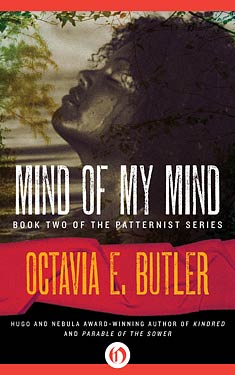Octavia
Butler
Completed 1/5/2019,
Reviewed 1/5/2018
3 stars
This is the
second book in the Patternist series chronologically, and the second
written. It takes place in the present
and follows the lives of the descendants of Doro and Anyanwu as they try to
cope with their psionic abilities. It is
well written, but lacks relatability to the characters. Everyone is angry and violent, something I
could not identify with. Nonetheless,
the characters are well developed, and there are quite a few of them. The concept is downright intriguing, but
ultimately, the book left me a little unsatisfied.
The plot begins
about a hundred years after the end of Wild Seed, in a town in the violent outskirts
of Los Angeles. Doro and Anyanwu, now
known as Emma, have many descendants, together and separately. Most of them have some form of telepathic power. Some have become full telepaths, some are
latent. Both types become dangerous
because either they are on the receiving end of a lot of psychic noise, or they
actually have the power to control other people. They are all part of Doro’s experiment to
create a master race of telepaths by selective breeding.
One such
bred child, Mary is the most powerful telepath ever produced. After she makes her painful transition from
latent to active, she draws other actives to her through a web that’s created
in her mind, a Pattern. The others don’t
know why they’re drawn, but they have to go to her, like being tugged hard on a
leash. After much anger and frustration,
they become a sort of family, Patternists.
They reach out to other actives and latents, helping transition the
latents to fully active psionic ability, as well as helping them live calm,
less violent lives. This sets Mary up as
a sort of nurturing matriarch compared to Doro’s abusive, murderous patriarchy
and culminates in an ultimate showdown of power and will.
I found the
book hard to get into. I had no empathy
for most of the characters and only a little empathy for Mary. None of the characters are really relatable. However, they are all well developed. There are a group of telepaths who are drawn
to Mary shortly after her transition and they become a sort of First Family. Somehow, none of them are cardboard; they are
all very realistic. Not all the
characters are simply telepaths. Rachel
in particular is a healer, like Anyanwu was.
And Clay has the ability to levitate himself and others.
Race and
racism have some play in the book, although it is not too strongly developed. I got the impression that most of the
characters are black and that the few who are white are noted as such. Jan, one of the first family, begins as a
racist, but eventually softens as she comes into herself and discovers her
talent for art. Doro, as in the first
book, sometimes shows up as white and sometimes as black, depending on who has
killed in his need to constantly change bodies.
Karl, Mary’s husband, is white and when Mary asks him what he thinks of
black people, his response is, “Did you see my cook?”
I give this
book three out of five stars. I didn’t
have as strong as a response to this book as I did the first. The first book was an intense sprawling epic. This book is the rise of the first PatternMaster. It is intense in that there is a constant
sense that at any moment, one or many of the Patternists may explode. But it just doesn’t carry the weight of the
first book. I’m still looking forward to
the rest of the series, because this world Butler created is very intriguing,
albeit brutal. I’m amazed these books
were written in the late 70s/early 80s.
They hold up well with time, unlike some of the psionic stories of the
50s.

No comments:
Post a Comment